#La Tène style
Text

La Tène style design by Aleck Fagan
#La Tène style#pagan#witch#nature#design#pagan witch#the goddess#the horned god#moon#sun#celtic polytheism#celtic witch#celtic style#celtic paganism#celtic art#celtic#irish art#irish heritage#irish history#ancient ireland#concentric#iconography#druidism#pagan druid#druid#sigils
3 notes
·
View notes
Photo
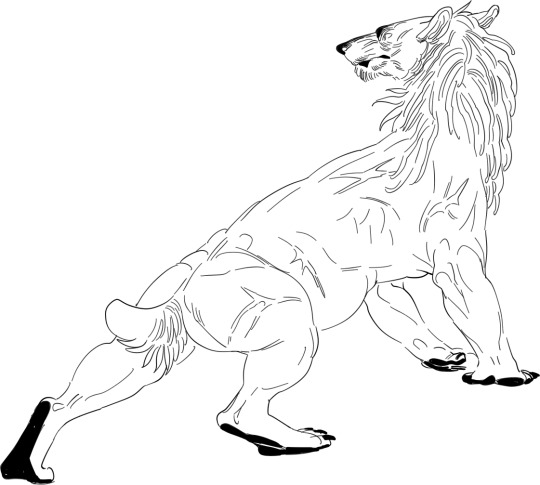
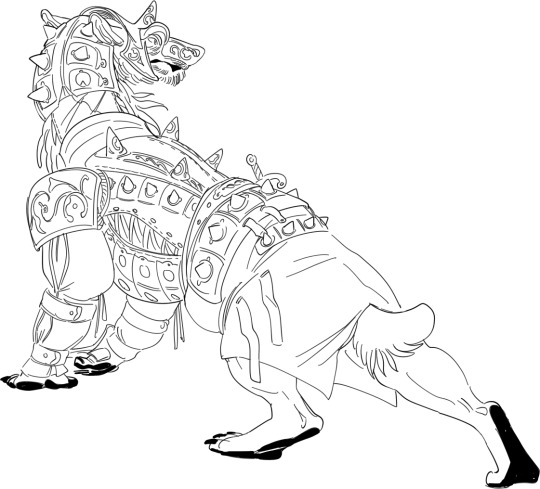
olivier werewolf form
he is actually very small, so small that he can shift without having to change clothing. this ability is more less unique to him in this setting, among a whole cast of giant werewolves, that it gives him an edge in combat because he gets to stay armoured while they don’t. his aides add the helmet and neck protection when he turns. his armour is roughly based off old gallic armours which is roughly correct in the setting time and place, though the embossed decorations on the helmet and pauldrons are la tène style
#in fact he is 5'2" in human form and roughly the same as a dog just with different proportions#i made him anachronistically spiky as a way of adding more back defense like when ppl put hawk vests on lil dogs#setting: inver
909 notes
·
View notes
Text
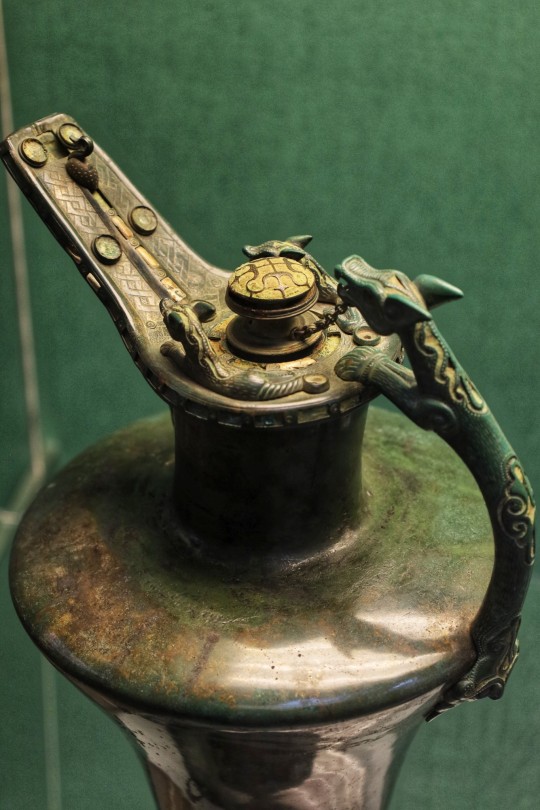
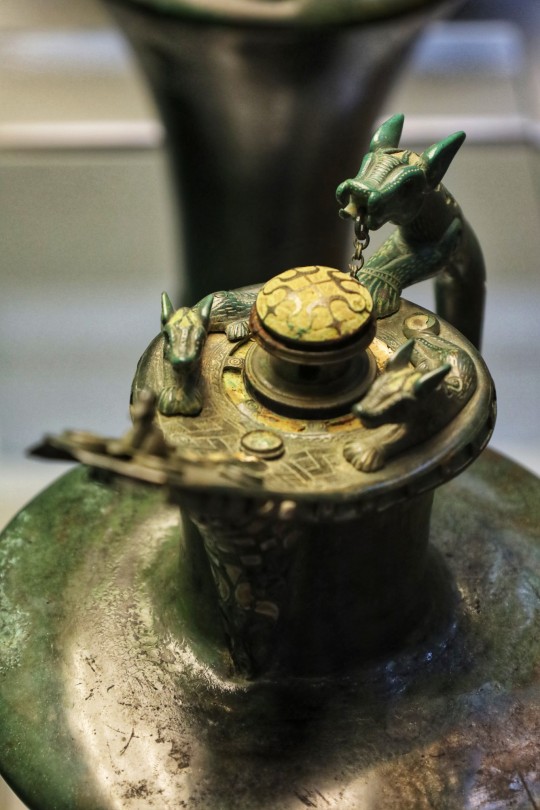
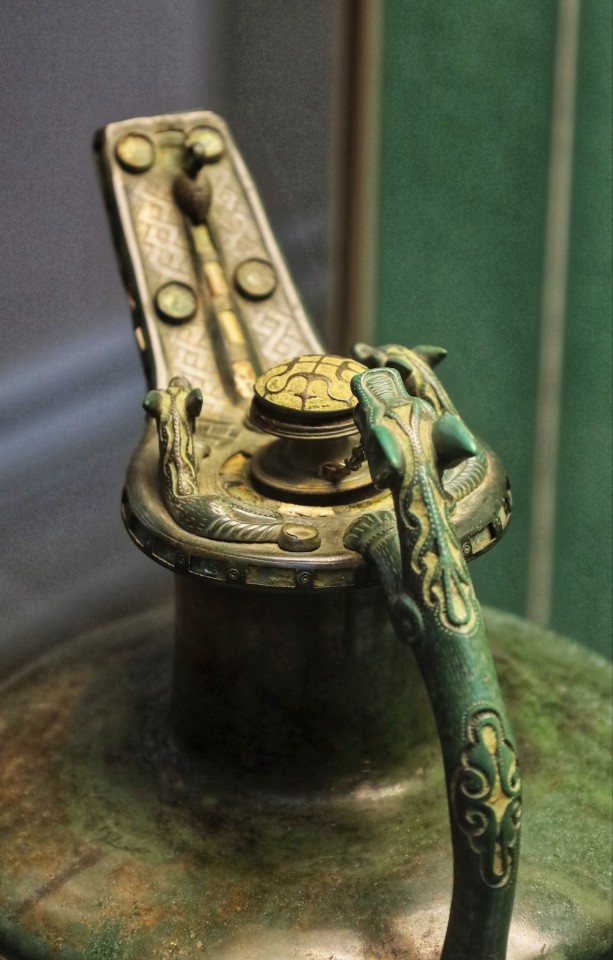
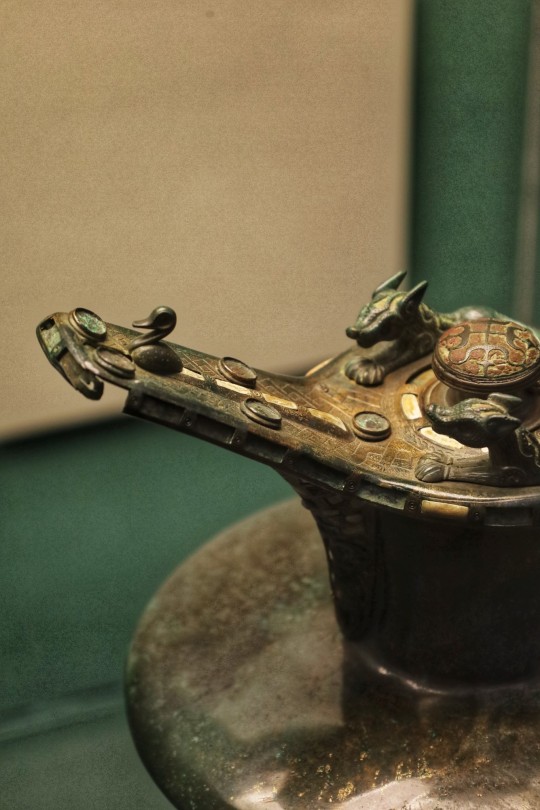
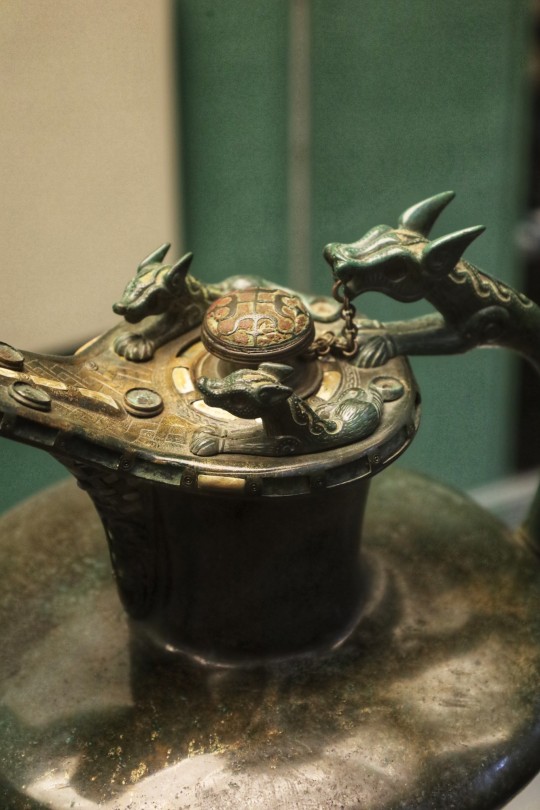

Prehistoric Bronze Flagon Decorations In 'La Tène' Style, circa 450BCE, Basse-Yutz, Eastern France, The British Museum
#ice age#stone age#bronze age#copper age#iron age#neolithic#mesolithic#calcholithic#paleolithic#prehistoric#prehistory#prehistoric metalwork#metalwork#flagon#symbols#archaeology#artefact#ancient living#ancient craft#ancient culture#british museum
580 notes
·
View notes
Text

I did not expect an iron-age Celtic helmet that looks like a ball cap 🧢
It is called the Meyrick Helmet and has La Tène style decorations.
“La Tène style is "a highly stylised curvilinear art based mainly on classical vegetable and foliage motifs such as leafy palmette forms, vines, tendrils and lotus flowers together with spirals, S-scrolls, lyre and trumpet shapes"
Wikipedia
2 notes
·
View notes
Note
Idk if anyone's mentioned but is the 666 tattoo a reference to white supremacist-style triskelion? Is it, like, a reclaimation of it?
It is a reference to the triskelion, yes, but not in a white supremacist fashion, no, dear Lord! I've just always been very interested in paganism and folklore. It was a wildly used motif in the art of the Iron Age Celtic La Tène culture, especially, but it can be traced back to the European Neolithic and Bronze ages. No white supremacy here whatsoever, fear not!
ETA: Plus, here in France, the triskelion is often used by Bretons as a symbol of their region (Breizh). You see it everywhere, from bumper stickers to logos on menus in a lot of creperies.
1 note
·
View note
Text
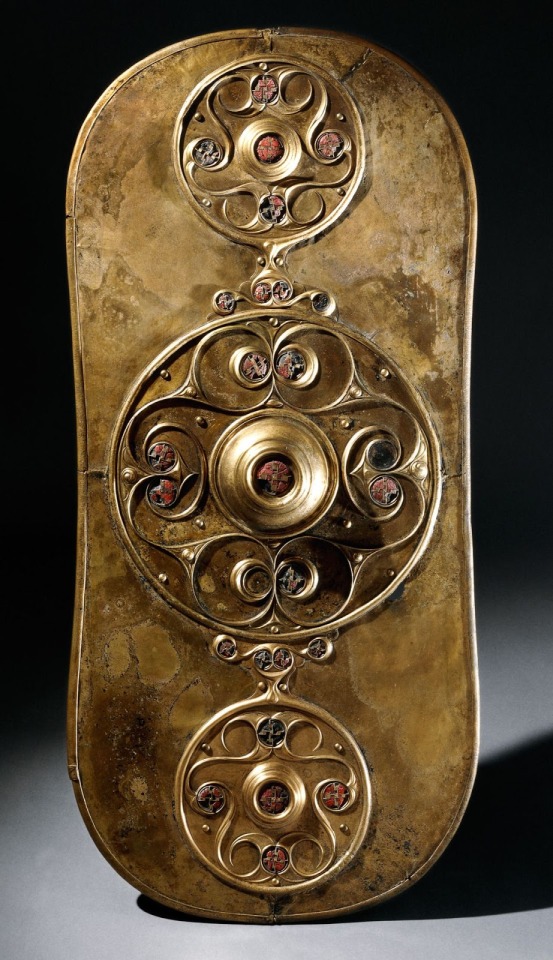
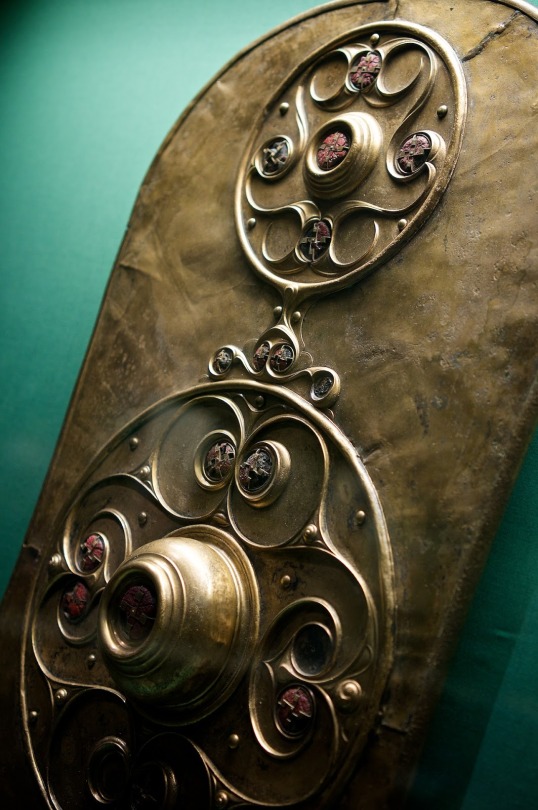

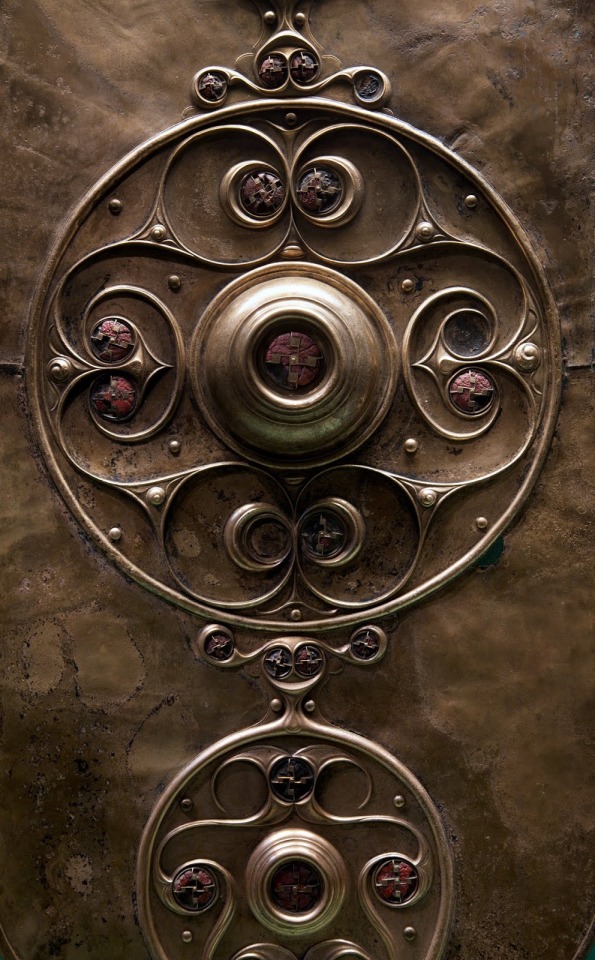
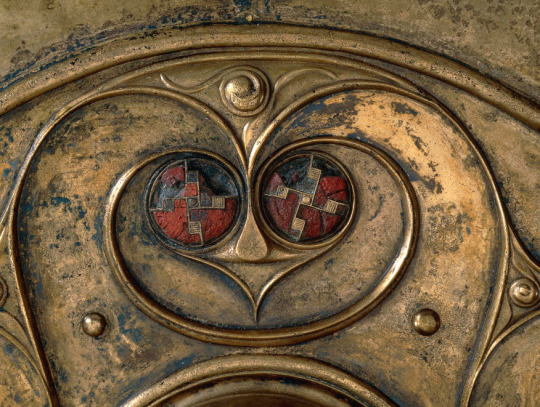
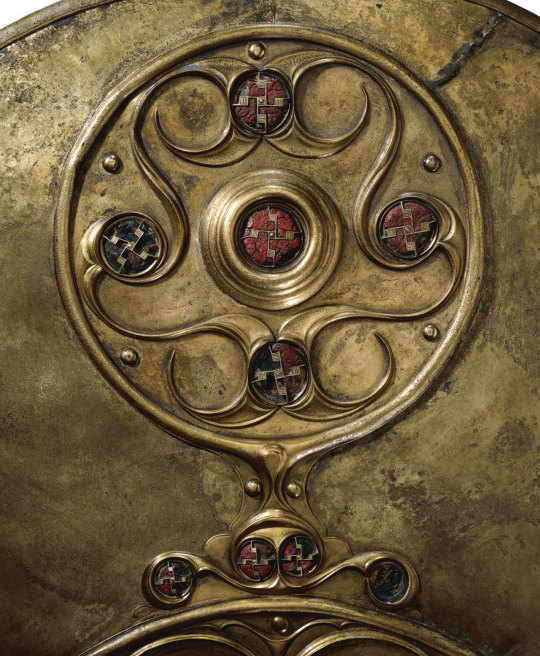

The Battersea Shield 350-50 BCE. Length: 77.7 cm, Width: 34.1–35.7 cm. The British Museum.
"Bronze shield facing; scrolls in relief; made of several pieces of sheet bronze. With twenty-seven red glass 'enamel' framed studs.
The Battersea shield is not in fact a complete shield, but only the facing, a metal cover that was attached to the front of wooden shield. It is made from different parts of sheet bronze (4 sheets and 3 decorated panels), held together with bronze rivets and enclosed in a binding strip. All the rivets are hidden by overlaps between different components where the panels and roundels were originally attached to the organic backing.
The decoration is concentrated in the three roundels. A high domed boss in the middle of the central roundel is over where the handle was located. The La Tène-style decoration is made using the repoussé technique, emphasized with engraving and stippling. The overall design is highlighted with twenty-seven framed studs of red glass 'enamel' (opaque red glass) in four different sizes, the largest set at the centre of the boss. The dominant repoussé forms on the shield are the palmette and interlocking S-motifs.
Stylistically, the La Tène-style decoration is not closely related to any other object. Because of this, closely dating this object is difficult. The shield was almost certainly made in Britain because of the use of a specifically British form of central circular shield boss."
-taken from BritishMuseum
https://paganimagevault.blogspot.com/2020/05/the-battersea-shield-350-50-bce.html
#celts#celtic#ancient celts#europe#swastika#england#london#european art#pagan#antiquities#paganism#museums#archaeology#battersea#the british museum#4th century bce
86 notes
·
View notes
Photo
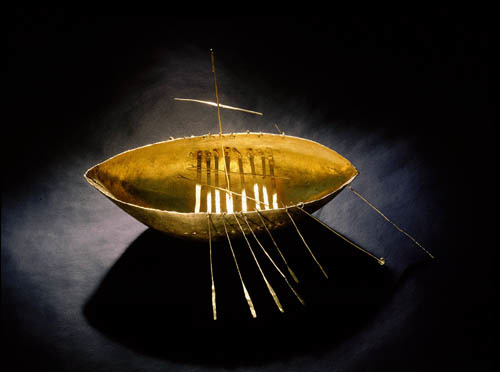
This approx. 18 cm high golden ship model is part of the Broighter Hoard ( is a hoard of gold artefacts from the Iron Age of the 1st century BC) , which was discovered in Limavady, Northern Ireland, in 1896 and is in the possession of the National Museum of Ireland. It is an artefact of the Celtic La Tène culture and may have been a votive gift to the sea god Manannán mac Lir.
The boat, a hide boat, is surprisingly simple in style, but at the same time contains everything you would expect from such a functional object. It has a mast, a rudder, oars, seats and even a boat hook (which brings us back to the fact that the boat hook was not developed in 1800). It may also have once carried an organic sail, but this has been lost over time.
232 notes
·
View notes
Text
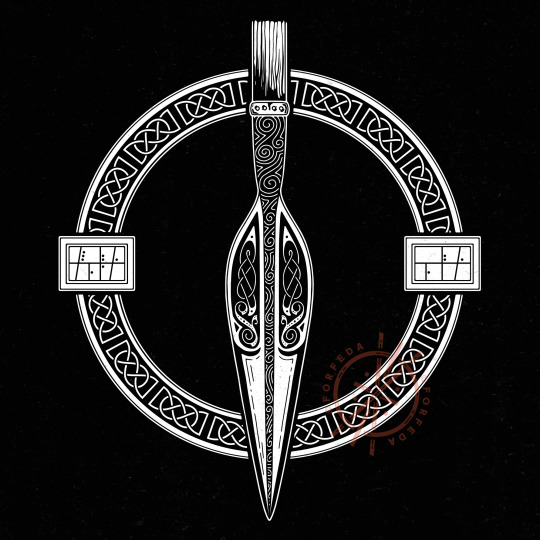
SLEG LUG
"Out of Gorias was brought the Spear that Lug had. No battle was ever won against it or him who held it in his hand."
The youthful Lugh Mac Ethlinn was a king and warrior of the Tuatha Dé, renown for his great skill in all manner of disciplines, which earned him the epithet Samildánach (master of every art). Among his many powerful artifacts, Lugh was said to possess a deadly magical spear that made him undefeatable in battle.
Based on historical Bronze Age Irish spearheads, this design features three major art styles found in Ireland: Neolithic spirals, Iron Age La Tène motifs, and Medieval knotwork. The name "Sleg Lug" is written in Brecor Beo, a variant of the ogham alphabet from the Book of Ballymote.
Part 2/4 of my Four Treasures series.
#celtic#celtic art#mythology#irish mythology#celtic mythology#folklore#ireland#sleg lug#lugh#lámhfada#spear#four treasures#tuatha de danann#celtic knot#knotwork#pagan#pagan art#gaelpol#artists on tumblr#forfedaproject
247 notes
·
View notes
Text
‘Celtic’ art
Celtic knotwork is beautiful, its an aesthetic I am 100% here for, but interestingly its not ‘celtic’ at all. Well not in an archaeological sense. Iron Age art work is far more abstract, with beautiful loops and swirls.
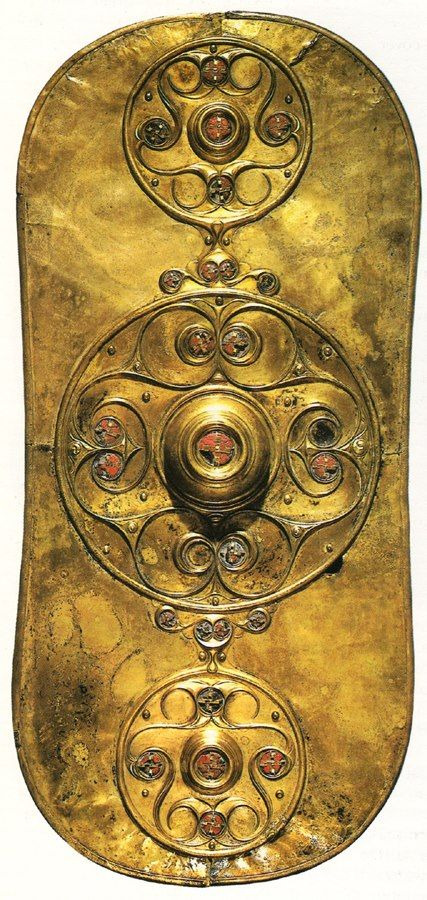
This is the Battersea Shield, dated to middle-late Iron Age. Lots more pretty pictures under the cut.
This style is known as La Tène, and it was prominent in France and Southern Britain in the Iron Age. Here are some other lovely examples of La Tène metalwork

This is a mid-late Iron Age shield boss, also from London. The design is often interpreted as birds.
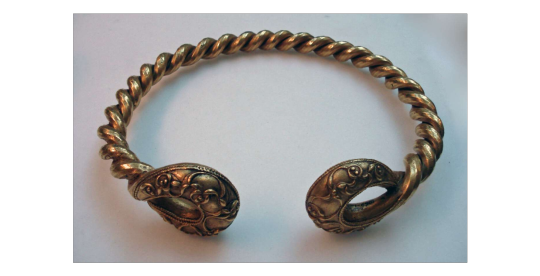
Late Iron Age Torc from Ipswitch. Look at the patterns on the ends, its almost hypnotic.
You know what does look like ‘Celtic’ knotwork? Anglo Saxon and Early Medieval art. Its about 5 centuries after the end of the Iron Age in England
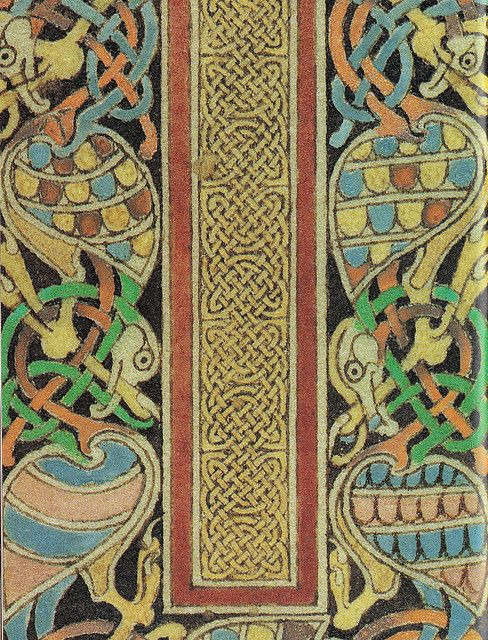
This is a page from the Lindisfarne Gospels, dated to c. 700 AD. Much more what the lay person thinks of as Celtic right?

This is an Anglo Saxon Brooch from the Pentney Hoard (Norfolk) dated to 800-840 AD. Look at the scrollwork on the edges. Classic knotwork pattern.
I’m not sure how the styles ended up being so mixed up in the vernacular, but I’m inclined to blame the Victorians, as well as the general confusion about the word ‘Celtic’.
#Archaeology#Archeology#Iron Age#British Archaeology#History#Celtic#Celtic Art#Celtic knotwork#Iron Age art#La tene#British History#ancient britain#iron age england#celtic england#anglo saxon art#SexandSunworship#Art history
366 notes
·
View notes
Photo
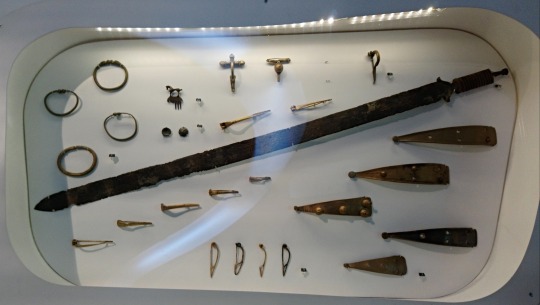
Celtic River Offerings
These objects that you see here have all been found near the Dutch place of Kessel and Lith in Limburg in the river Maas. Just like how the river Rhine was seen as sacred and had its own deity, the Maas was also viewed as a sacred place where offerings were made to this river. These objects are dated to between 250-0BC and thought to be offerings given to a deity of the Maas.
You can see fibulae, bracelets, triquetrum coins, a comb, belt hooks and a La Tène sword. Next to these objects, remains of animal and human bones were found as well. Judging by the style of these objects, they must be Celtic in origin and if you look at the location where they have been found, it isn't that strange. The Maas lies below the Germanic border of the Rhine and this area was once territory of the Celtic Eburones tribe.
I have written about the Eburones a few months ago for those who want to know more about this tribe. The Celts viewed certain places in nature as sacred, per example certain mountains, rivers, lakes, swamps, forests etc. This is basically the same religious view that the Germanics had about nature.
These offerings are militair in nature so they might have been offered to the deity of the Maas after a Celtic victory in battle. It wasn't uncommon to deposit the enemy's weapons and gear (or your own) after a victory as a thanks to the Gods, both Celtic and Germanic cultures practiced this kind of spirituality. I found it fascinating to view these objects because they belonged to the Eburones who were completely massacred by Julius Caesar during his genocidal campaign in modern day Belgium and the Southern Netherlands.
108 notes
·
View notes
Text
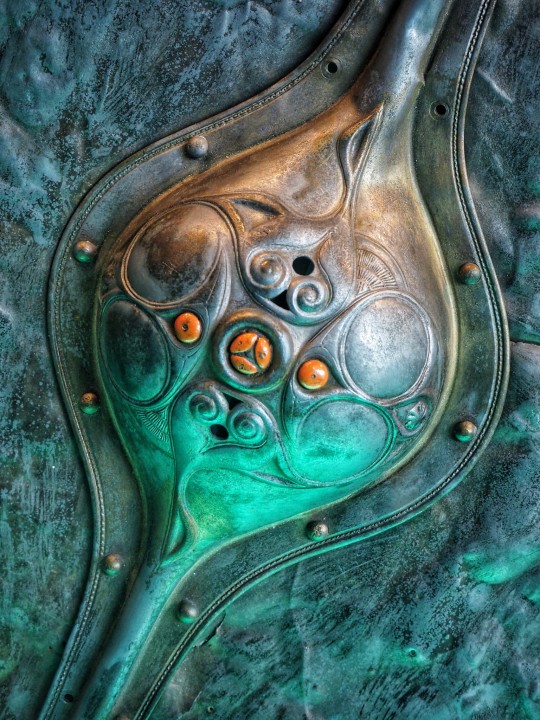
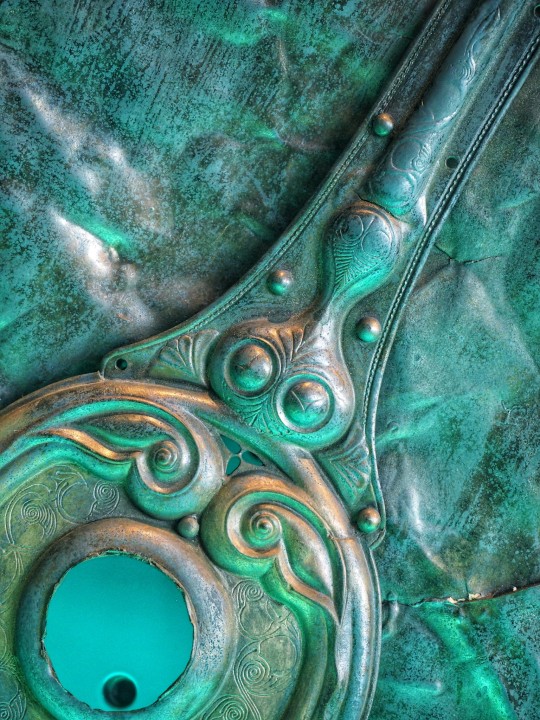
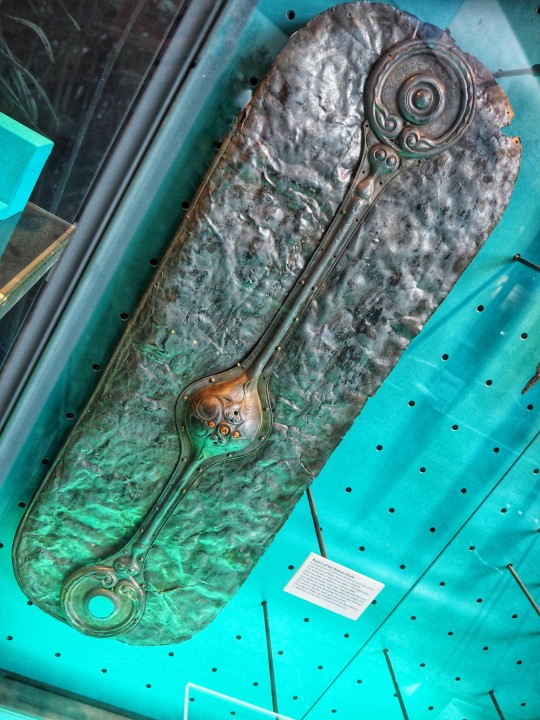
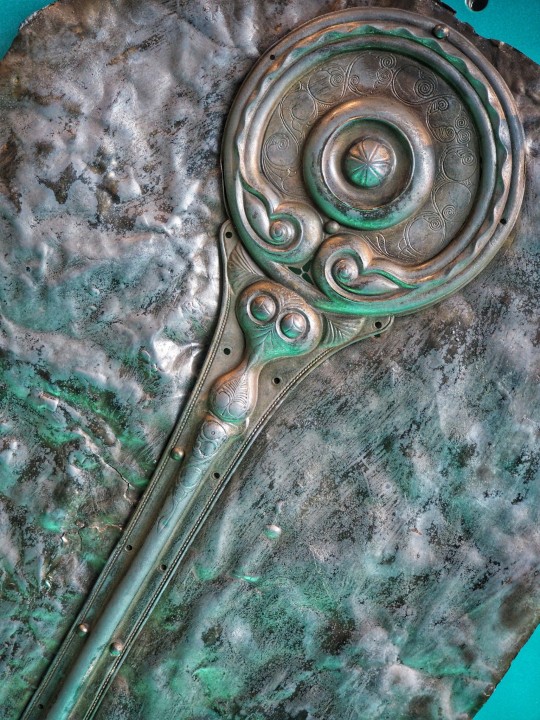
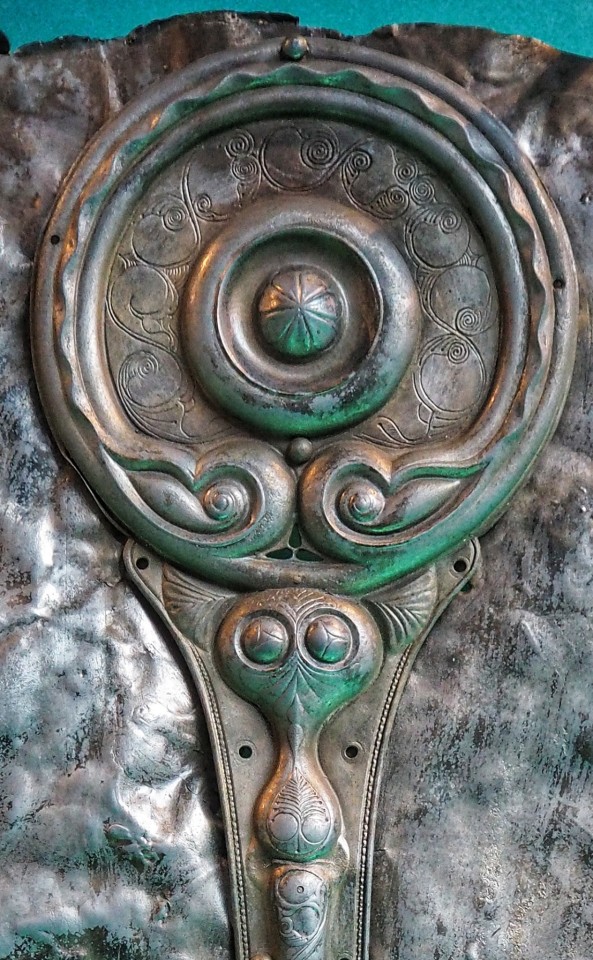
Replica of the Witham Iron Age Shield (la Tène styled), The Collection, Lincoln.
Original in The British Museum.
#ice age#stone age#bronze age#copper age#iron age#neolithic#mesolithic#calcholithic#paleolithic#prehistory#prehistoric#prehistoric metalwork#shield#latene#creative#education#cross arts#cross curricular#community#identity#belonging#ritual#archaeology#celtic art#celt#celtic knot#celtic
67 notes
·
View notes
Text
Research
Evgeny Hontor is a Russian artist who uses velvet clay to create sculptures of creatures both real and imagined.
The style he creates some of his sculptures in reminds me of the Celtic La Tène designs carved on stones, shields and jewellery.





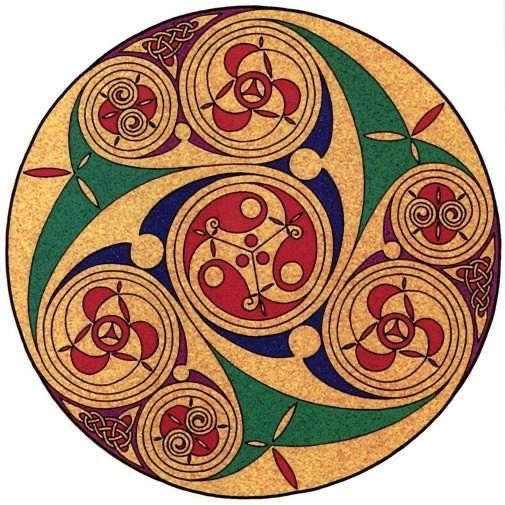
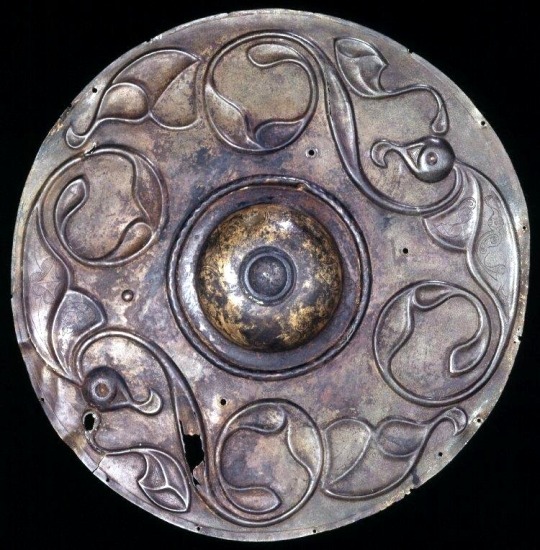

4 notes
·
View notes
Text
The Northern Wind
Vol I: The Nordic art-book, focusing on the traditional styles of the viking age, and modern renditions. This book starts at 300 pages. This art-book will be full of Nordic/Viking-age art, mainly from Scandinavia, but with some elements from other areas, such as the UK, where the Vikings had a lot of influence. It will have examples of the different styles, dissections of the styles and methods, and lots of new designs by Peter Blackhand.
There will be also be a chapter with the work of other Nordic artists, both illustrators, woodcarvers, tattooists and more.
Vol II: The Historical Europa book, will be focused on other historical styles from all over Europe, with different chapters on the Celtic styles, Pictish, Anglo-Saxon, Petroglyphs and more. Some styles are geographically focused, such as the La Tène, and the Pictish, while others more widespread. This book will hold most of the stretch-goals, including the Runes and Bindrunes. It starts on 60 pages, but will steadily grow as we proceed through stretch-goals.
Vol III: The manual on Nordic tattooing. A guidebook on how Peter Blackhand works, from easy-to-use designs and elements, to the methods on how to create a sleeve based on Norse designs. This will give you unique insight in his methods, and make any tattooist capable of creating Nordic and Historical tattoos with a great flow, and a level of precision unmatched. It will also be including segmented designs, so you can easily build a unique design of a dragon, wolf or wyrm. It should be mentioned that the skills and methods in this book will also be helpful to anyone into carving, woodwork, silver/metal-work and stonework.
Who is it for? These books aims to become the books you must have if Vikings, Celts and ancient art is your thing, and for anyone interested in reenactment, tattoos, game-design, art, archaeology and history.
#art#historical art#artwork#nordic art#Scandinavian art#Scandinavian#pictish#pictish art#Celtic#celtic art#Anglo saxon#anglo saxon art#folktro#asatru#germanic#germanic art#heathen#heathenry#pagan#pagans#witchblr#paganblr#wicca#wiccan#witch#witchcraft#occult#norse#vikings#viking art
53 notes
·
View notes
Text
“In the wake of this episode of ‘Celtoskepticism,’ the relatedness and common origins of the Celtic family of languages remain unchallenged scientific facts, and the name ‘Celtic’ for this family - given that all such terms are ultimately arbitrary - is no more misleading of historically unjustified than such well-established and undisputed terms as, say, ‘Germanic’ or ‘Semitic.’ On the other hand, the idea that certain types of non-linguistic culture - such as artefacts in the La Tène style - can be meaningfully described as ‘Celtic’ requires great circumspection.”
- John Koch (ed.), Celtic Culture: A Historical Encyclopedia
3 notes
·
View notes
Quote
La Tène style is a highly stylised curvilinear art based mainly on classical vegetable and foliage motifs such as leafy palmette forms, vines, tendrils and lotus flowers together with spirals, S-scrolls, lyre and trumpet shapes.
Raghnall O'Floinn, “Treasures of the National Museum of Ireland: Irish Antiquities“
#celtic#celts#art#la tene#style#celtic art#quotes#excerpts#fragment#research#articles#tattoo inspo#x
149 notes
·
View notes
Photo

Turoe Stone
The Turoe Stone (Irish: An Tuar Rua) is a stone made of granite in County Galway, Ireland. It is one of the few examples of the La Tène style in Ireland.
Read more at: https://paganplaces.com/places/turoe-stone/
7 notes
·
View notes